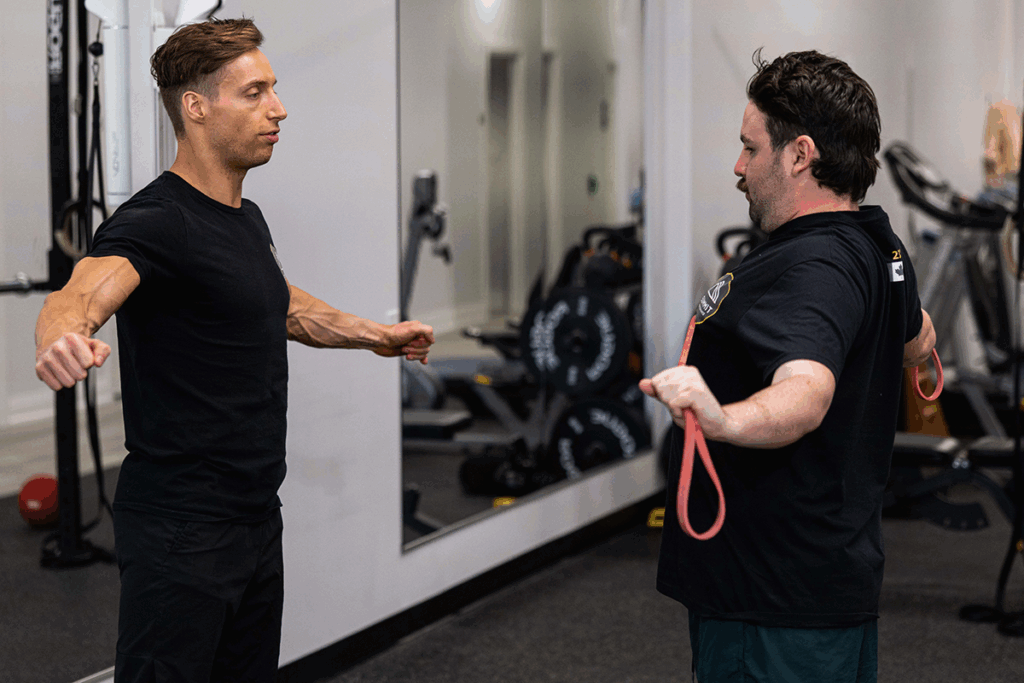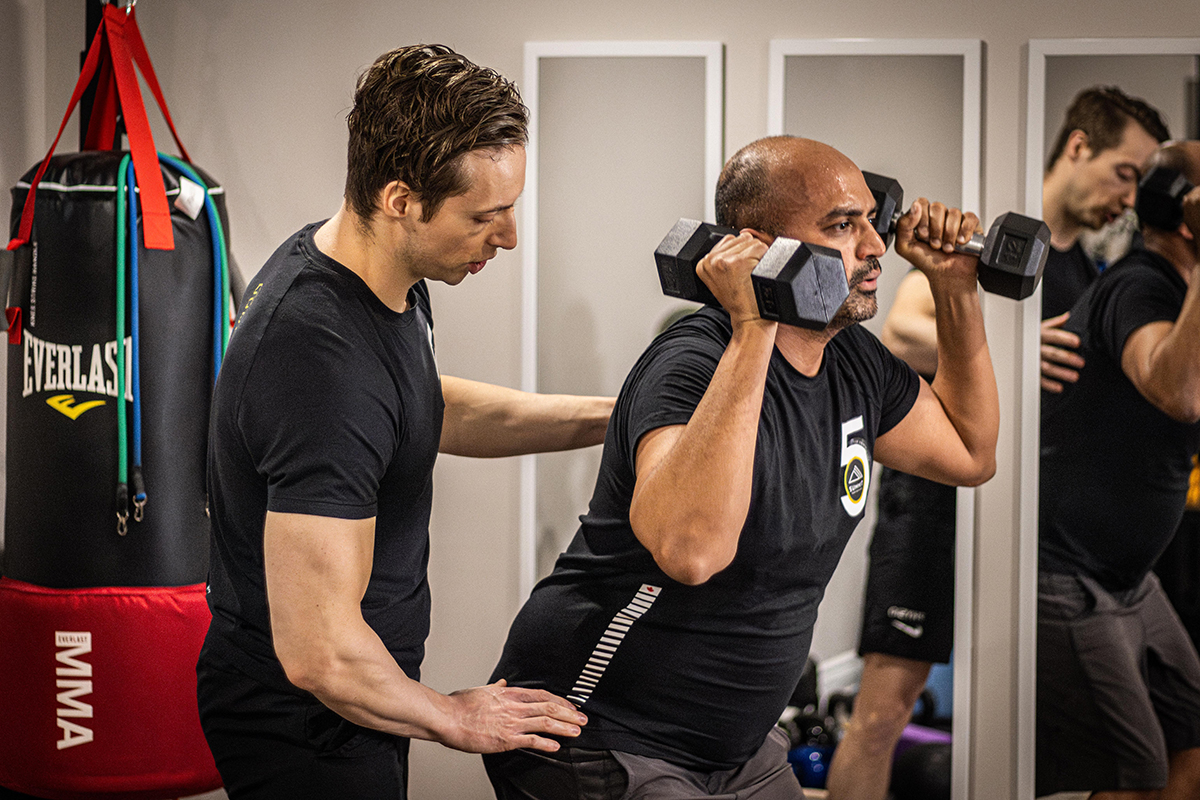Overcoming Pain: Effective Exercise Strategies
As a Canadian physiotherapist and travel service personal trainer for executives, business owners and unique solo athletes, almost everybody I work with experiences and lives with some degree of pain and discomfort. This can range from short-term injuries to hip, knee and back pain that have built up over time.
I’ve written this article based on the anecdotes I hear from my clients who want to enjoy exercise, but struggle with pain preventing them from working out in the way they want. Take these tips as broad strategies that can help you put yourself in the right direction. If you’re still struggling, work with a physiotherapist to get specific guidance for your situation. Here are five tips for overcoming pain during exercise.
The “I Can Mindset”
If you find yourself in pain when you exercise, the most important thing you can do is find what you can do. My job as a physiotherapist is to understand the source of my client’s pain, assessing what exercises will help or hinder their recovery.
For example, if you’ve been a runner for 25 years and have knee pain when you go for a run, it doesn’t mean you can’t exercise, rather, it’s a sign you will have to adapt the way you are exercising so your body can heal and you can return to your favorite sport or discipline. Keeping an “I can” mindset is essential through this process.
As we age, injuries tend to stack up even if we do everything we can to live a healthy lifestyle. That means the way you exercise at age 40 is probably not going to be the same way you did at age 20. Embracing what you can do, even if it looks different than before, will give you the motivational fire to keep investing in your health & fitness. Working with your personal trainer or physiotherapist can help you find pain free options and create a plan that will get you to return to your sport or discipline.
As a physiotherapist, the most rewarding part of my job is seeing my clients return to the activities they love and is the reason I became one. I had my sense of purpose taken away from me with a martial arts injury that sidelined my athletic life for four years so getting that sense of purpose and passion back through exercising around pain with the help of my physiotherapists near and far is what brought me full circle!

When in Doubt, Keep Moving
When you’re having joint pain, there’s mounting scientific evidence suggesting that exercise is almost always better than doing nothing. This applies whether you just rolled your ankle or have chronic low back pain. The disconnect here comes from what people think the word “exercise” means.
If you sprain your ankle falling off a curb, do you need to keep exercising? Yes. Does that mean it’s wise to go run a marathon tomorrow? Of course not. Change your perspective on what the word “exercise” means to include things such as balance and range of motion exercises, and your sprained ankle will likely improve compared to sitting on the couch and waiting for it to “get better.”
People get stuck into thinking that “exercise” only means weight training or cardio. If you’re feeling unsure, working with your physiotherapist can help you identify the degree to which you should be moving and where to draw that line between helpful and too much. That reassurance can be a big difference in helping you get through your discomfort and back to the things you love as quickly as possible.
Light Weights — Done Slowly
Explosiveness and high speed movements are generally not tolerated well when you are in pain. If you like to do explosive movements, that’s great. It’s not only important for your health and fitness, but I’d argue that most people don’t do enough of it as they age. However, you have to pick the right times to do that kind of training.
Let’s continue with the ankle example from above. The day after injury, asking you to do single leg hopping drills requiring fine motor skills and explosive movements is probably a bad idea for both the healing tissues in your ankle and your confidence for the long term.
Your body will tend to respond favorably when you slow the exercises down to the point that they are pain free or nearly pain free. It’s not always possible, but it is a helpful strategy by ensuring that you are not using momentum to accomplish the exercise; allowing the muscles to do their job instead of delegating those forces to the joints or other compensatory structures as the velocity increases.
Again, this is one of those times where having your own physiotherapist to rely on for guidance can help you find an optimal balance to your long term health and fitness goals.

Endure the Short-term Monotony
If you are in pain, doing exercises you don’t like is sometimes a necessary sacrifice. You may find that for your particular injury or discomfort, you’re able to do that movement pain free—or nearly so—and progress with your strength in the process.
This summer, my physiotherapy mentor told me that he went nearly six months where he was only able to do one exercise for his chest due to shoulder pain. Did that prevent him from exercising? No. Did that mean he had to endure the short-term monotony of doing the same exercise every day for six months, in pursuit of the long-term greater good? Yes. That mindset and discipline to work through the hard times and monotony for a better long term is critical to success.
Being in pain might mean that you may not be able to do the exercise you “want” to do, but the monotony of a pain free & effective option can sometimes be the short term boost to allow you to quickly recover and return to the exercises you love so much with new enthusiasm that motivates you ever forward in your training!
Always Keep Fighting
I’ve found through my clinical work that people typically have a narrow field of view when it comes to their goals and day-to-day grind. I mean that in the best possible way—it’s hard to focus on exercising in six months, when your shoulder really hurts today. Having said that, if you can adopt the mindset of zooming out and looking at your health and fitness from a broader time perspective, you’re often able to appropriately see what you’re fighting for. You’re likely not aiming for the capacity to perform a specific exercise or to do “your favorite” exercise in a particular session, but more likely an internal satisfaction or reward as a result of the process of training or exercising and realizing you’ve overcome the challenges to be where you are today.
If you successfully shift your framing of time, you will see that the real battle is not the day-to-day grind of a particular workout, but having the long term mindset that keeps yourself moving with a positive attitude and the awareness that you’re in pursuit of being as healthy as possible for yourself, your family and beyond. It takes zooming out and humility to achieve those objectives.
If you have specific questions for Mike, contact him anytime at info@summitperformance.fit. You can also meet Mike in Japan in November.

